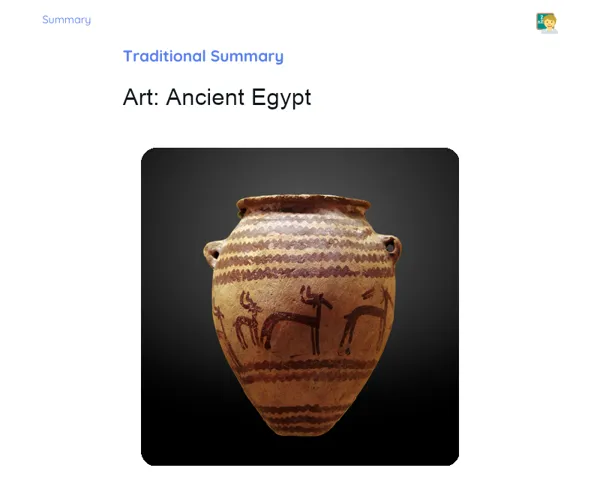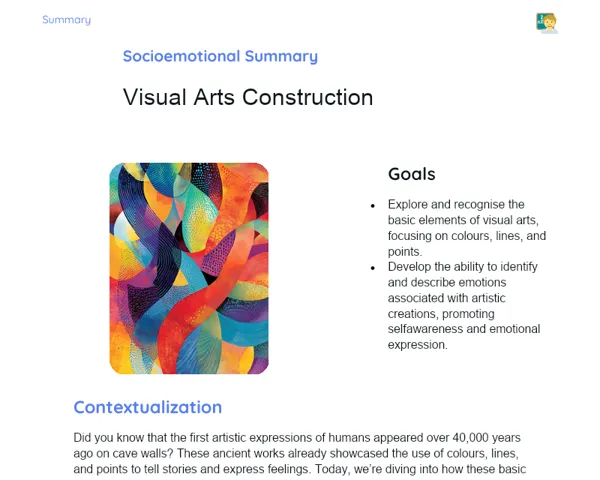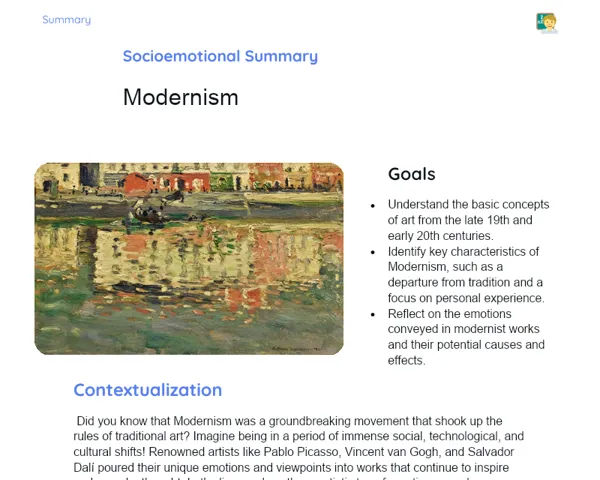Goals
1. Grasp the concept of Greek art and its significant traits.
2. Recognise mythological depictions in Greek art and their impacts in ancient times, the Renaissance, and today.
Contextualization
Ancient Greek art is a cornerstone of Western culture, renowned for its sculptures, paintings, architecture, and pottery. It not only mirrored the everyday experiences and mythological beliefs of the era but also served as a medium for political and social commentary. To truly appreciate the trajectory of art and culture from ancient times to now, understanding Greek art is essential. For instance, the aesthetics of Greek sculpture significantly influenced the European Renaissance, and techniques like marble carving are still prevalent in contemporary architecture and design.
Subject Relevance
To Remember!
Characteristics of Greek Art
Greek art is celebrated for its devotion to realism, proportion, and the aspiration for aesthetic perfection. Its defining features include the utilisation of symmetry, harmony, and mathematical ratios, crafting sculptures and structures that echo an idealised vision of nature and the human form.
-
Realism: Accurate and intricate representation of human figures and the natural world.
-
Proportion: Implementation of mathematical ratios to achieve equilibrium and aesthetic harmony.
-
Symmetry: Balanced structures and sculptures that evoke a sense of order and elegance.
Mythological Reproductions
Greek mythology serves as a bountiful well of inspiration for Greek art. Numerous artworks showcase deities, heroes, and mythic events, intended for both the embellishment of public spaces and the communication of cultural and religious ideals.
-
Gods and Heroes: Portrayals of mythological beings like Zeus, Athena, and Hercules.
-
Mythological Events: Illustrations of grand battles and epic tales such as the Trojan War.
-
Symbolism: Incorporation of mythological symbols and icons to convey deeper messages and cultural significance.
Historical Influences
The impact of Greek art on the European Renaissance was profound, as artists sought to reignite the aesthetic and technical practices of the Greeks. This legacy persists today, visibly shaping various fields such as architecture, graphic design, and multimedia.
-
Renaissance: A revival of the aesthetic and technical principles rooted in Greek art.
-
Architecture: Adoption of columns, pediments and other classical elements in contemporary buildings.
-
Contemporary Design: Utilising Greek symmetry and proportion to conceive modern and innovative pieces.
Practical Applications
-
Modern Architecture: Implementation of Greek columns and styles in both public and private constructions.
-
Game Design: Drawing from myths and Greek aesthetics to develop characters and settings in video games.
-
Cinema: Crafting epic films that illustrate Greek mythology and leverage Greek aesthetic techniques for visual storytelling.
Key Terms
-
Realism: An artistic approach aiming for a truthful and detailed portrayal of the world.
-
Proportion: The mathematical relationship among the elements of an artwork, employed for balance and coherence.
-
Mythology: A collection of myths and legends that elucidate the world's origins and natural phenomena, frequently served as themes in Greek art.
Questions for Reflections
-
In what ways does the quest for aesthetic perfection in Greek art echo in today’s artistic practices?
-
How does Greek mythology continue to permeate contemporary popular culture?
-
What challenges arise in incorporating the aesthetic principles of Greek art into modern design and architecture projects?
Creating a Mythological Mosaic
Let's cement our grasp of Greek art by crafting a mosaic that embodies a mythological theme. This hands-on activity will allow you to implement the aesthetic concepts we've discussed while tapping into your creativity.
Instructions
-
Form groups of 4 to 5 members.
-
Select a Greek mythological theme for your mosaic, such as a deity, hero, or mythic event.
-
Draft a sketch of the mosaic on a large sheet of paper.
-
Utilise coloured paper pieces or cutouts from old magazines to bring your draft to life, gluing them in place to form the mosaic.
-
Finally, each group should present their work, explaining the chosen theme and the techniques they employed.



